Ninh Binh’s limestone karsts rise dramatically from emerald rice paddies and winding rivers, creating a scene of almost divine beauty. Nestled within this breathtaking landscape are ancient Ninh Binh pagodas and temples, each echoing with centuries of devotion and spiritual legacy. This unique harmony is the reason it is recognized as a Ninh Binh UNESCO World Heritage site, a place where spiritual legacy and natural wonder are one.
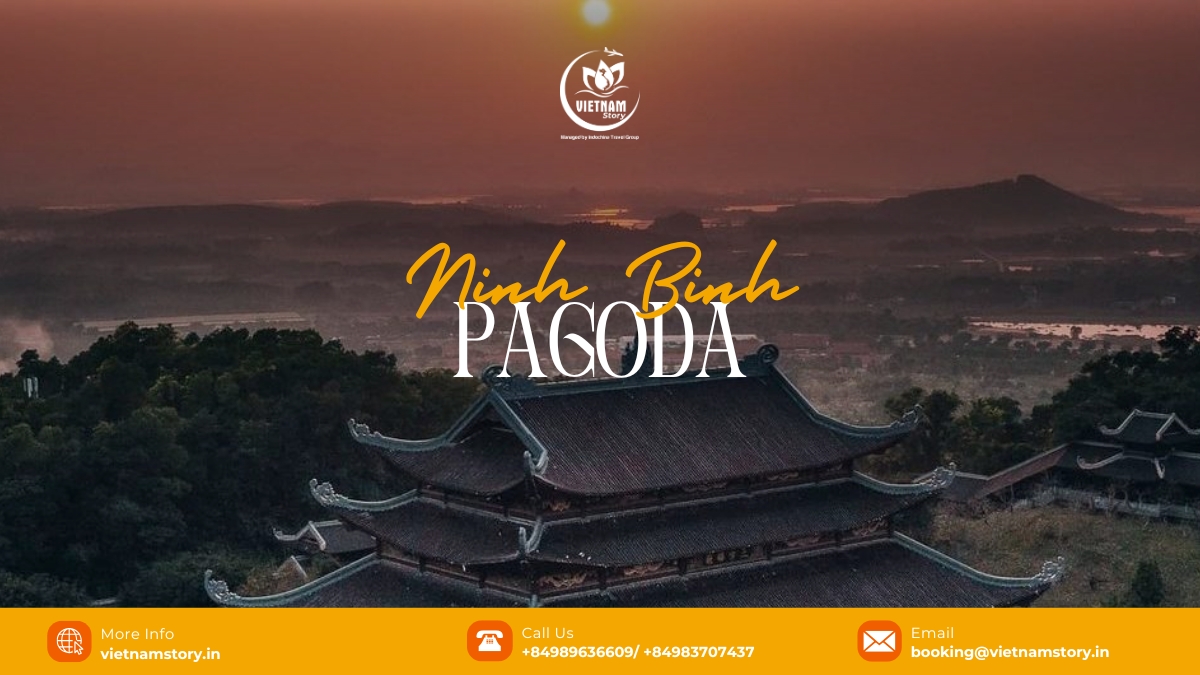
Why a Ninh Binh Pagoda tour is perfect for Indian travellers?
I’ve often seen the eyes of my Indian guests light up when they visit Ninh Binh‘s pagodas. There’s a familiar sense of reverence here, a connection to ancient traditions that resonates deeply. The serene atmosphere is perfect for meditation or quiet contemplation, much like your own sacred sites. The stunning natural backdrops – pagodas built into caves, perched on mountainsides, or surrounded by lotus ponds – remind many of the picturesque temple settings in India.
And of course, for those who love capturing memories, the photography opportunities are simply endless! A Ninh Binh Pagoda tour is not just about sightseeing; it’s about experiencing a profound blend of history, vibrant culture, and awe-inspiring nature that touches the soul. Furthermore, after a day of spiritual exploration, it’s comforting to know that you can easily find authentic Indian restaurants in Ninh Binh, making the entire trip even more welcoming.
READ MORE: Best time to visit Ninh Binh
Top 9 Must-Visit Pagodas and Temples in Ninh Binh
Ninh Binh is blessed with a remarkable array of spiritual sites. Here is our list of the top 9 sanctuaries you absolutely shouldn’t miss.
1. Bai Dinh Pagoda
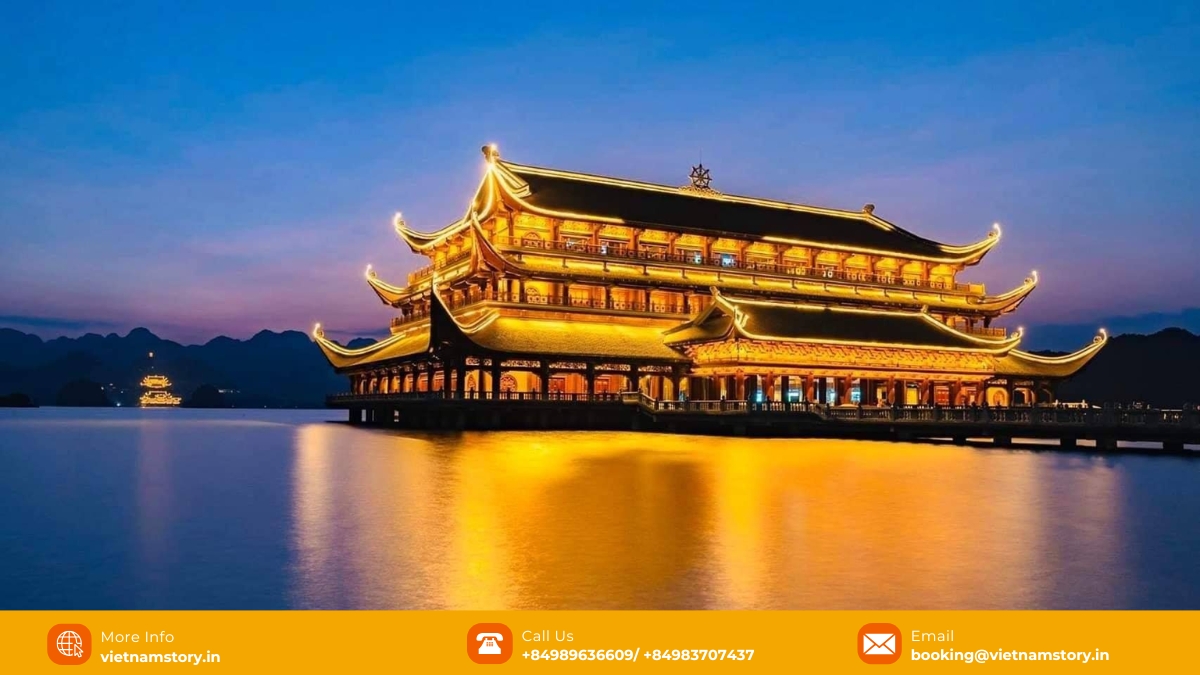
Prepare to be amazed by Bai Dinh Pagoda, Southeast Asia’s largest Buddhist complex and a major center for Vietnamese Buddhist Pilgrimage. Its sheer scale is breathtaking, known for its record-holding status. The complex features a 100-ton bronze Buddha, the longest Arhat corridor in Asia, a 36-ton bell, and dazzling golden decorative elements. Due to its vast size, using the electric car transport is highly recommended to navigate between the ancient pagoda area and the magnificent new complex. Allow at least 3-4 hours to truly explore.
READ MORE: A spiritual journey to Bai Dinh Pagoda
2. Bich Dong Pagoda

A beautiful contrast to Bai Dinh, Bich Dong Pagoda (“Jade Cave”) offers intimate charm with its unique cave-integrated structure. This ancient Ninh Binh Pagoda is built in three tiers (Ha, Trung, and Thuong) up a mountainside, accessed via a picturesque stone bridge over a lotus pond. The journey of climbing stone steps through caves to reach different levels adds to its mystique and provides a deep sense of peace.
3. Hoa Lu Ancient Capital (King Dinh & King Le Temples)
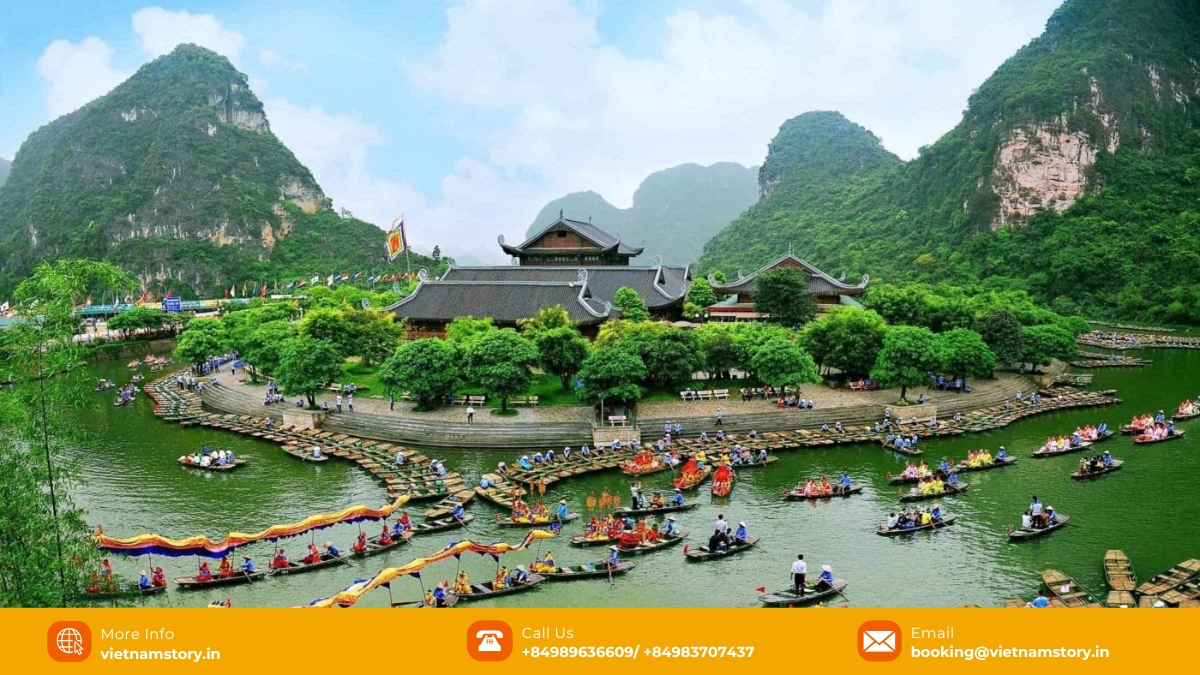
While not solely pagodas, Hoa Lu holds immense historical significance as Vietnam’s 10th-11th century capital. The complex features vital temples dedicated to Emperor Dinh Tien Hoang and Emperor Le Dai Hanh of the Dinh and Le Dynasties. A visit here offers a profound understanding of Vietnam’s dynastic roots, with beautiful traditional architecture set within ancient citadel walls.
4. Am Tien Cave and Pagoda (Tuyet Tinh Coc)
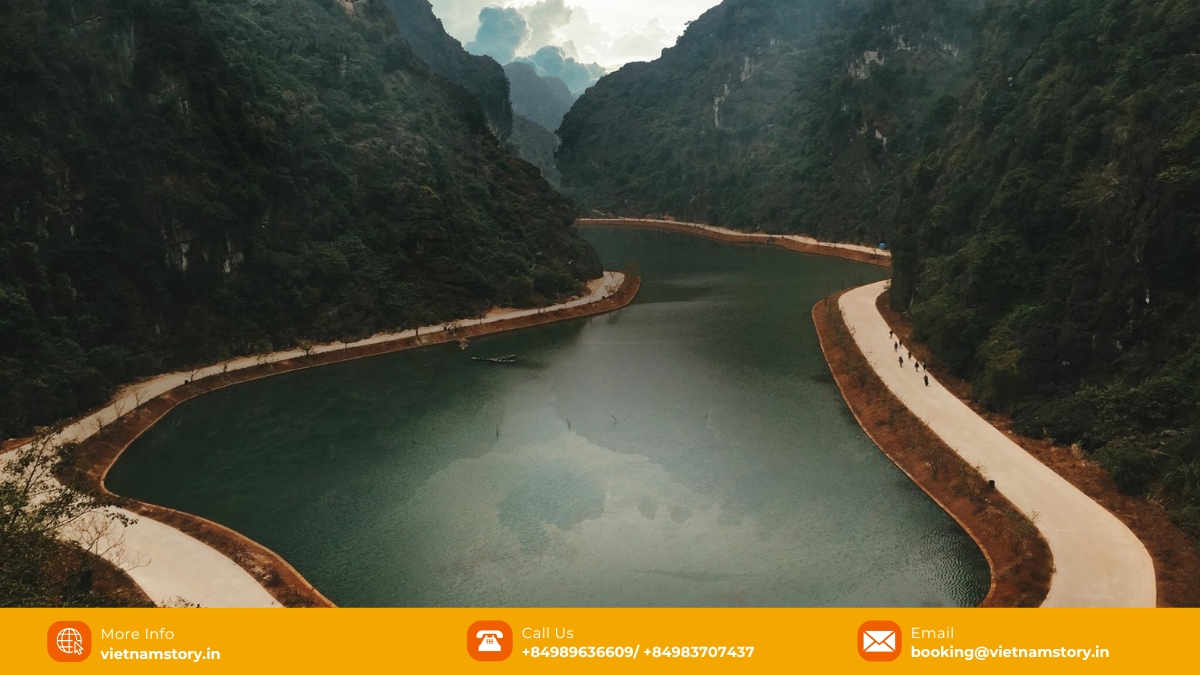
Often called “Absolute Love Valley,” this secluded spot features a serene turquoise lake, a cave pagoda, and an almost ethereal beauty. The tranquility, stunning reflections, and unique cave setting for the pagoda create a magical atmosphere. Historically a place of punishment and later a spiritual retreat, the climb to the cave pagoda offers fantastic views of the enclosed valley.
5. Thai Vi Temple
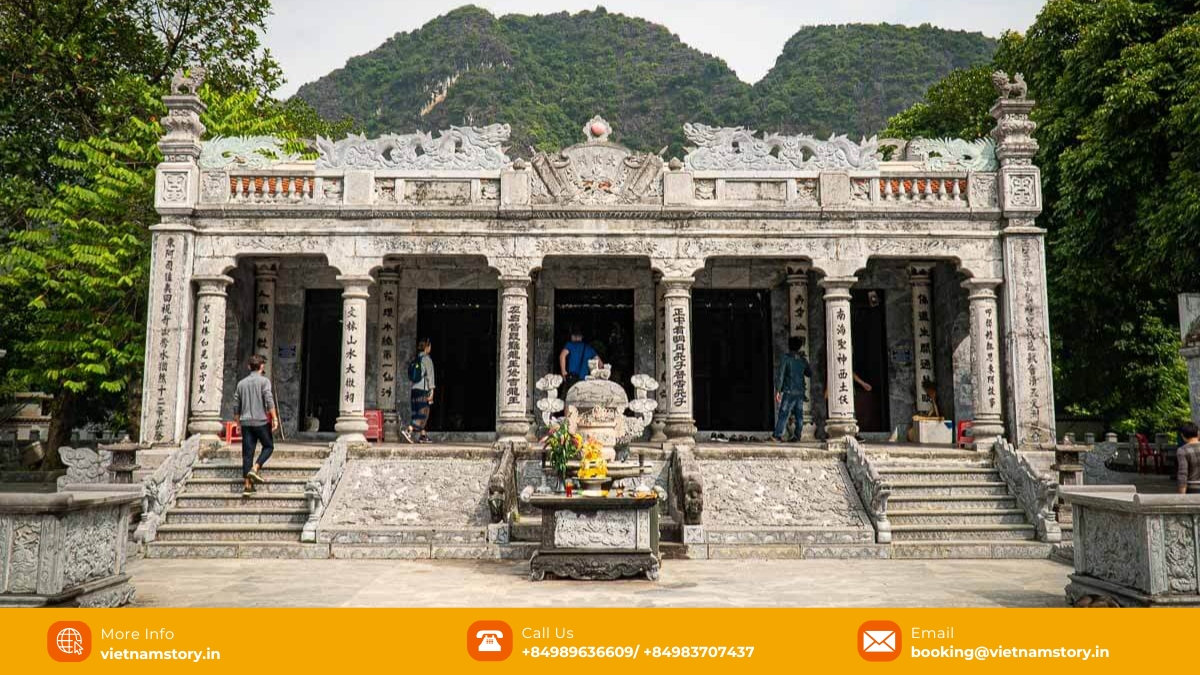
Located in the Tam Coc valley, this quieter, deeply historical Vietnamese Temple is dedicated to the Tran Dynasty kings. Thai Vi Temple offers an authentic historical feel, connecting to Vietnam’s royal past. Its setting amidst rice paddies and karsts is stunningly serene and is often visited during Tam Coc boat tours.
6. Nhat Tru Pagoda
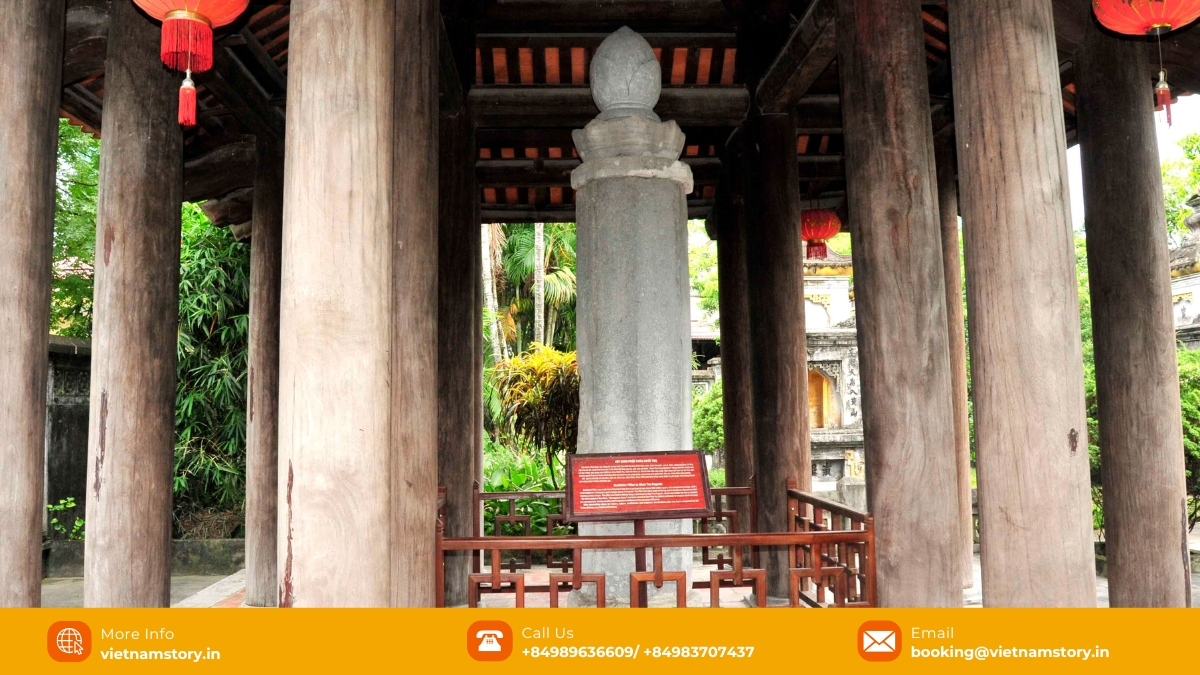
Located within the Hoa Lu Ancient Capital complex, Nhat Tru Pagoda is most famous for its namesake stone pillar carved with Buddhist sutras, which is recognized as a national treasure. Dating back to the 10th century, it offers a quieter, more contemplative experience within Hoa Lu and is a testament to the long history of Buddhism in Vietnam.
7. Duyen Ninh Pagoda
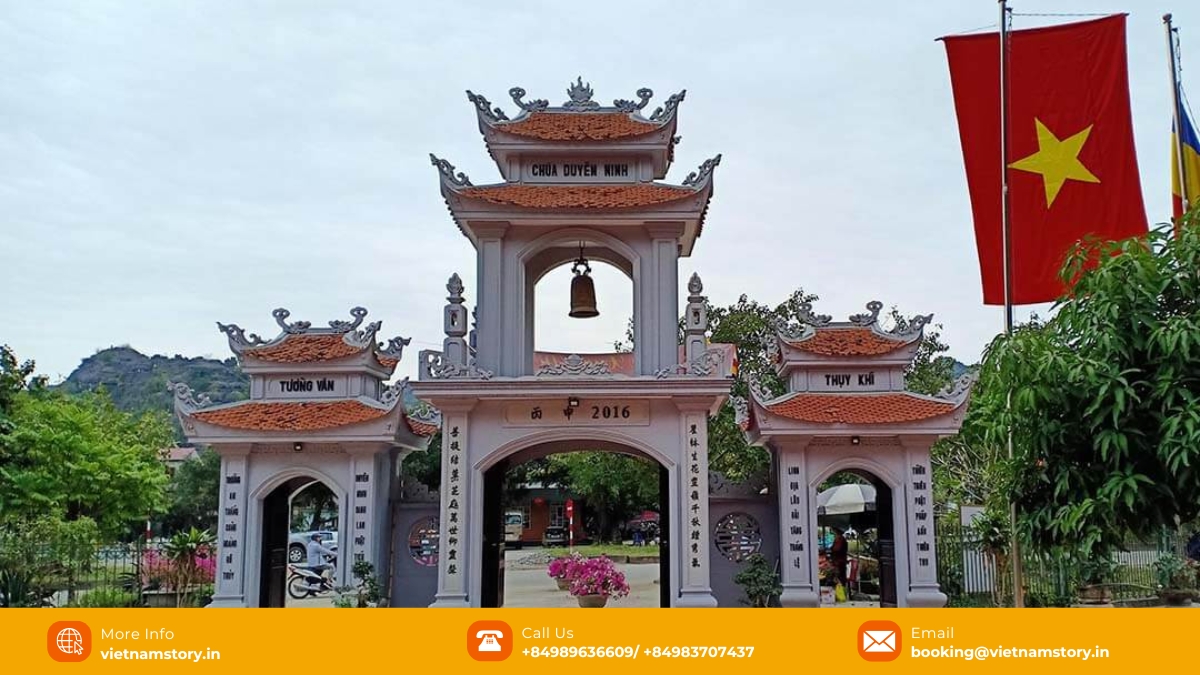
This ancient pagoda, dating back to the Dinh Dynasty (10th century), has become particularly famous as a place to pray for love, happiness, and successful marriages. Many visitors come to seek blessings for romantic relationships, giving it a unique, hopeful energy. Its ancient architecture and serene atmosphere make it a unique stop.
8. Non Nuoc Pagoda
Perched at the foot of Non Nuoc Mountain, where the Day and Van Rivers meet, this pagoda boasts a scenic and historically significant location near Ninh Binh city. Its location offers beautiful views of the confluence, a classic example of a vital Ninh Binh river that has shaped both the landscape and its history. Non Nuoc pagoda has been rebuilt over centuries but retains its spiritual essence, serving as a tranquil place that has witnessed many events in Vietnamese history.
9. Dich Long Pagoda and Cave

Located in Gia Vien district, Dich Long is a captivating complex comprising a beautiful cave system and a pagoda. The natural beauty of the stalactite-filled caves combined with the spiritual ambiance of the pagoda inside creates a mystical experience. It’s a bit off the main tourist trail, offering a wonderful sense of discovery.
Best time to visit any Ninh Binh Pagoda
Choosing the right time can greatly enhance your Ninh Binh Pagoda experience:
- Spring (March to May): Pleasant weather (20-28°C), lush greenery, blooming flowers. Ideal for sightseeing. The Bai Dinh Pagoda festival usually occurs after Tet (Lunar New Year).
- Autumn (September to November): My personal favourite! Comfortable temperatures (25-30°C), clear skies, and the golden rice harvest (late Sep/Oct). Photographers’ dream!
- Considerations: Summer (June-August) can be hot and humid with rain. Winter (December-February) can be cool and misty.
Essential tips for your Ninh Binh Pagoda pilgrimage
To ensure your visit is smooth and respectful:
- Dress code is key: Crucial! A strict dress code requires that knees and shoulders must be covered. Lightweight shawls or sarongs are perfect for this.
- Comfortable footwear: You will be doing lots of walking and stairs. Easy-to-remove shoes for entering worship halls.
- Pagoda etiquette:
- Speak softly.
- Remove hats/shoes before entering worship areas.
- Don’t point feet at altars/statues.
- Ask permission before photographing monks/people praying.
- Avoid public displays of affection.
- Hydration and sun protection: Carry water, wear sunscreen, hats, sunglasses.
- Getting around: While there is no direct Ninh Binh airport, the province is easily accessible from Hanoi by motorbike, bicycle, taxi, or pre-booked tour.
- Offerings: Small donations are appreciated but not mandatory.
READ MORE: Top 10 best restaurants in Ninh Binh
Important notices for visiting a Ninh Binh Pagoda
A few final things to keep in mind:
- Respect local customs: A smile and “Xin chào” (hello) or “Cảm ơn” (thank you) go a long way.
- Official ticket counters: Purchase tickets only from official booths.
- Bargaining: For souvenirs, polite bargaining is acceptable.
- Protect the environment: Keep these sacred places clean. Do not litter.
Conclusion
Ninh Binh’s pagodas offer more than just beautiful sights; they offer a journey into the spiritual heart of Vietnam, a chance to connect with ancient traditions, and an opportunity to witness the profound harmony between human devotion and natural splendor. From the grandeur of Bai Dinh to the mystical caves of Dich Long, each Ninh Binh Pagoda tells a story and leaves a lasting impression.
